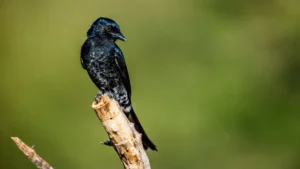Animals are constantly surrounded by the sounds and signals of other creatures. But can they actually understand what’s being said?
Every year, scientists uncover more about how animals communicate. Elephants, for example, greet each other with ear flaps and low rumbles. Sperm whales vary their clicking patterns depending on the situation, and naked mole rats even develop unique colony “accents.”

Clearly, communication in the animal kingdom is rich and complex. But it raises an interesting question: Can one species learn to understand the “language” of another?
Surprisingly, there are documented cases of animals picking up on — and even using — sounds and signals from species other than their own. Still, we’re only beginning to understand what these animals actually perceive and whether it’s anything like how we humans interpret language.
First, it’s helpful to clarify that when scientists talk about animal “language,” they don’t mean it in the same way we think about human language.

“Language is kind of a species-specific communication system to humans,” explained Simon W. Townsend, professor of evolutionary anthropology at the University of Zurich, in an interview with Live Science. Instead, researchers focus on specific aspects of communication — like whether a sound carries a particular meaning — rather than applying human-centered labels.
Birds Lead the Way
When it comes to understanding other species’ vocalizations, birds are some of the most well-studied. One study on songbird migration suggested that solitary birds can tune into the calls of other bird species along their migration route, potentially using these calls to navigate or stay safe.

“We essentially looked for non-randomness, looked for patterns in the vocalizations,” said Benjamin Van Doren, the study’s lead author and a professor at the University of Illinois Urbana-Champaign. By recording different species vocalizing near one another, the team found evidence that birds might be engaging in a kind of cross-species communication.
Their findings challenge the idea that bird migration is a solitary, silent journey. But while birds may be communicating, scientists still can’t say for sure what these calls actually mean.
“It’s logical to wonder if there are social connections among species,” Van Doren said. “I think these calls could contain more information than we currently understand.”
The Master Mimic: Fork-Tailed Drongos
Understanding is one thing — speaking is another. And that’s where the fork-tailed drongo really shines.
This small black bird, found throughout Africa, is a clever trickster. Drongos often shadow other animals like meerkats, hoping to snatch up any food they drop. To do this, they’ve developed a sneaky tactic: using alarm calls to scare their unsuspecting companions into hiding, then swooping in to steal a snack.
But this trick only works for so long. Eventually, meerkats catch on and start ignoring the drongo’s distinctive alarm squawk.
Here’s where things get interesting — instead of giving up, drongos adapt. They start mimicking the alarm calls of other birds, or even imitating the meerkats’ own warning sounds. By constantly switching up their alarms, they keep the meerkats on edge and the snacks coming.
“They know to mimic the species they’re following,” said Thomas Flower, a biologist at Capilano University in Canada who has studied drongos in the wild. “By doing that, they can keep their deception racket going.”
This flexible use of other species’ sounds shows that drongos are more than just copycats. They’re able to learn and apply new calls in context — a sign of what scientists call “open-ended learning.”
Whether the drongos are deliberately trying to deceive their targets is still up for debate. “Providing clear experimental evidence of intentional deception, or not, is very tricky,” Flower noted.

He also pointed out that young drongos, like human toddlers, often mimic sounds without fully understanding them. Over time, they learn what works through trial and error.
So, while we don’t yet know what’s going on in a drongo’s mind when it mimics another species’ alarm call, the behavior hints at some remarkable learning abilities — and maybe even the beginnings of something language-like.
